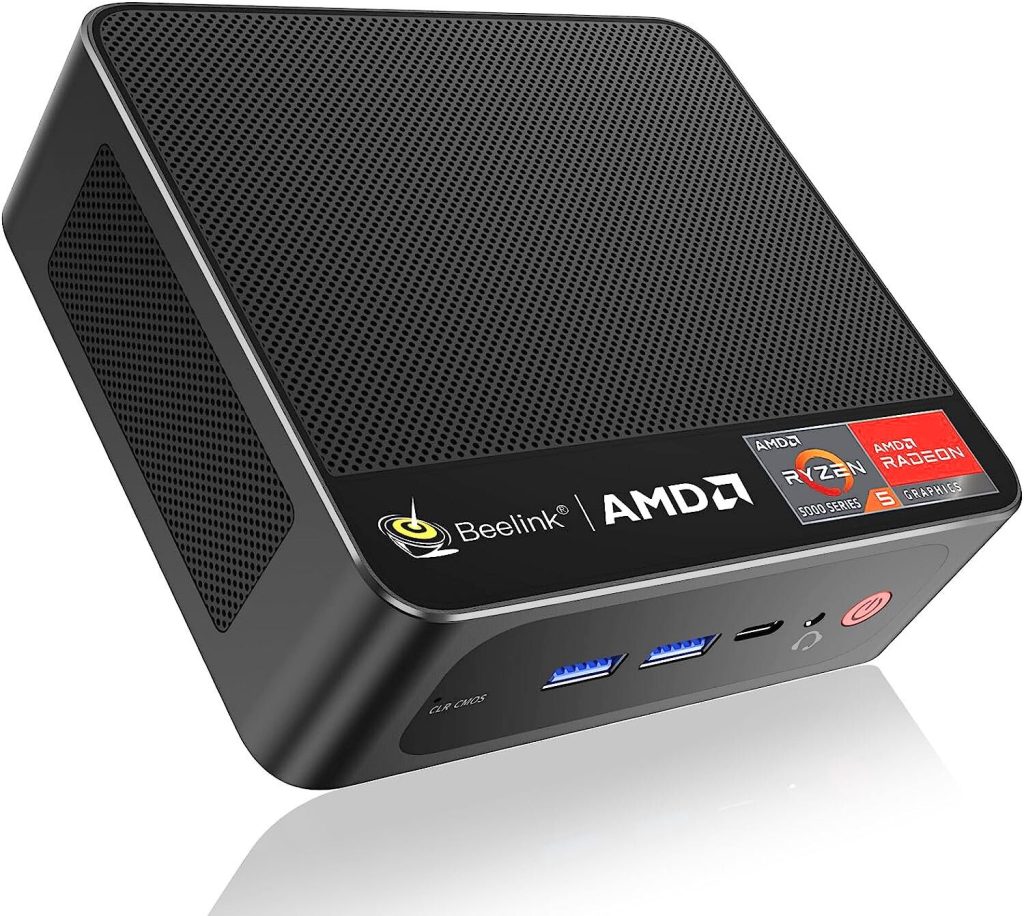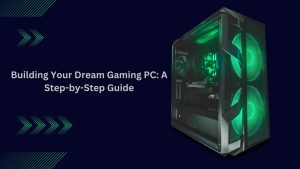Overview of Mini PCs
Mini PCs have become increasingly popular as an efficient and space-saving alternative to traditional desktop computers. They combine power, performance, and portability in a compact device that can fit almost anywhere. Mini PCs are perfect for home users who want to run simple tasks like browsing the internet, streaming media, and home automation software. They are also great for businesses that need a cost-effective solution for running point-of-sale systems, digital signage, and other business applications. In this article, we provide an overview of the best mini PCs for home assistant and highlight their key features and benefits.
Benefits of Mini PCs for Home Assistants
Mini PCs are an excellent choice for running home automation systems such as Home Assist ant. These compact devices offer a range of benefits that make them ideal for this purpose.
One of the primary advantages of mini PCs is their compact size. These devices are small enough to fit into tight spaces, making them a great choice for those who want to hide their home automation system out of sight. Additionally, mini PCs have low power consumption, making them energy-efficient and cost-effective to run.
Another benefit of mini PCs is their easy setup process. Most mini PCs come pre-loaded with an operating system, so you don’t need any additional software. Simply plug in the device, and you’re ready to go. Plus, mini PCs offer flexible configuration options, allowing you to customize your system to meet your performance requirements and storage capacities.
In summary, mini PCs are an excellent choice for running home automation systems. They offer a compact size, low power consumption, cost-effectiveness, easy setup, and flexible configuration options. With these benefits, using a mini PC for your Home Assistant can make managing your home automation system a breeze.
Why Use a Mini PC for Home Assistant?
As technology continues to advance, home automation is becoming an increasingly popular trend. From controlling indoor temperature to managing security systems, a smart home requires a reliable and efficient control system. This is where a mini PC comes in. A mini PC is a compact and energy-efficient device that can be used as a home assistant. In this article, we’ll explore the benefits of using a mini PC as your go-to home assistant, including low power consumption, flexible configuration options, and easy set up. By the end of this article, you’ll have a better understanding of why a mini PC is the perfect solution for your home automation needs.
I. Compact Size
When setting up a smart home, a Home Assistant is a crucial device that helps manage various smart appliances and applications. Since space is often a concern in households, having a compact and lightweight mini PC for Home Assistant is ideal.
Mini PCs are designed to be small and lightweight, fitting easily into any room without taking up much space. The size and weight vary depending on the manufacturer and model, but they are generally smaller than traditional desktop computers.
II. Low Power Consumption
When choosing a mini PC for Home Assistant, low power consumption is a crucial consideration due to the continuous operation required for home automation tasks. Mini PCs excel in this aspect by utilizing smaller form factors and more efficient components, resulting in significant energy savings over time. Not only do they consume less power compared to traditional desktop computers, but they also generate lower heat output, extending the device’s lifespan and reducing energy usage.
For instance, the ASUS PN41 mini PC is an excellent example of energy efficiency. With power consumption specifications ranging from 6W at idle to 15W at maximum load, it offers an optimal solution for Home Assistant users. Its low power requirements not only minimize energy costs but also contribute to a smaller carbon footprint. By opting for mini PCs with such power consumption specifications, homeowners can efficiently automate their homes without compromising their commitment to sustainability.
III. Cost-Effective
There are various mini PC options available for those seeking a budget-friendly way to operate Home Assistant. Although the list is not comprehensive, it can provide information on potential alternative choices.
One option is the Intel Celeron N5095/J4125, which offers a powerful processor and Intel UHD graphics at an affordable price. It also includes a variety of connectivity options such as USB ports, Wi-Fi 6, and gigabit Ethernet.
Another budget-friendly option is the Intel NUC 11 barebones kit. This mini PC includes the latest 11th-generation Intel Core processors and Intel Iris Xe graphics for top-notch performance, and supports up to 64GB of DDR4 RAM and NVMe storage.
The Intel N5105, with its 10-core GPU and a wide range of features, is another cost-effective mini PC worth considering. Additionally, the Intel Core i5-1240p with its 8-core CPU, alongside 8GB of DDR3 RAM and a 120GB solid-state drive, can be a great choice for Home Assistant users on a budget.
It’s important to note that not all of these options have been tested for running Home Assistant, yet they raise awareness of some cost-effective mini PC alternatives.
IV. Easy to Set Up
Mini PCs are an excellent choice for Home Assistant users as they offer powerful processing capabilities and a compact design. The good news is that setting up a mini PC for Home Assistant is quite easy. Most mini PCs come pre-installed with an operating system, which means that you don’t need to install it from scratch. Furthermore, there are numerous online resources available that can guide you through the installation process and help you troubleshoot any issues that may arise.
What’s more, mini PCs come with a range of customization options that allow you to tailor them to your space and performance requirements. For instance, you can easily add plug-in LAN adapters to ensure a stable network connection. Additionally, you can choose from a variety of USB/mSATA ports to connect external storage devices such as flash drives or solid-state drives.
V. Flexible Configuration
Mini PCs offer a high degree of flexibility and customization for users with specific needs. With a wide range of hardware and software configuration options, these devices can be tailored to fit a variety of applications where traditional PCs won’t work.
One use case for mini PCs is digital signage, where the compact and efficient design of a mini PC can be an advantage. These devices can be easily mounted behind displays or in small spaces to power vibrant and immersive digital signage experiences. Similarly, mini PCs are well-suited for small offices or home offices where space is at a premium, but processing power is still required.
Additionally, mini PCs can be used for cloud learning applications, where students and teachers need access to powerful computing resources from anywhere. By customizing the device with specific software and hardware configurations, mini PCs can be a cost-effective solution for deploying cloud-based learning resources.
Here Are The Best Mini PCs for Home Assistants
Home automation has become increasingly common in recent years, and one of the most important parts of an effective home automation system is a reliable and efficient mini PC. A mini PC for home assistant needs to be powerful enough to handle automation tasks, but also compact and energy-efficient enough to fit into a home environment. In this article, we will provide an overview of the top 5 mini PCs for home assistant. Each of these miniature computers boasts a range of features and specifications, making them suitable for various applications, from file servers and virtual machines to video editing and display output. Whether you want to set up an entry-level or high-end home automation system, these mini PCs have got you covered!
Intel NUC
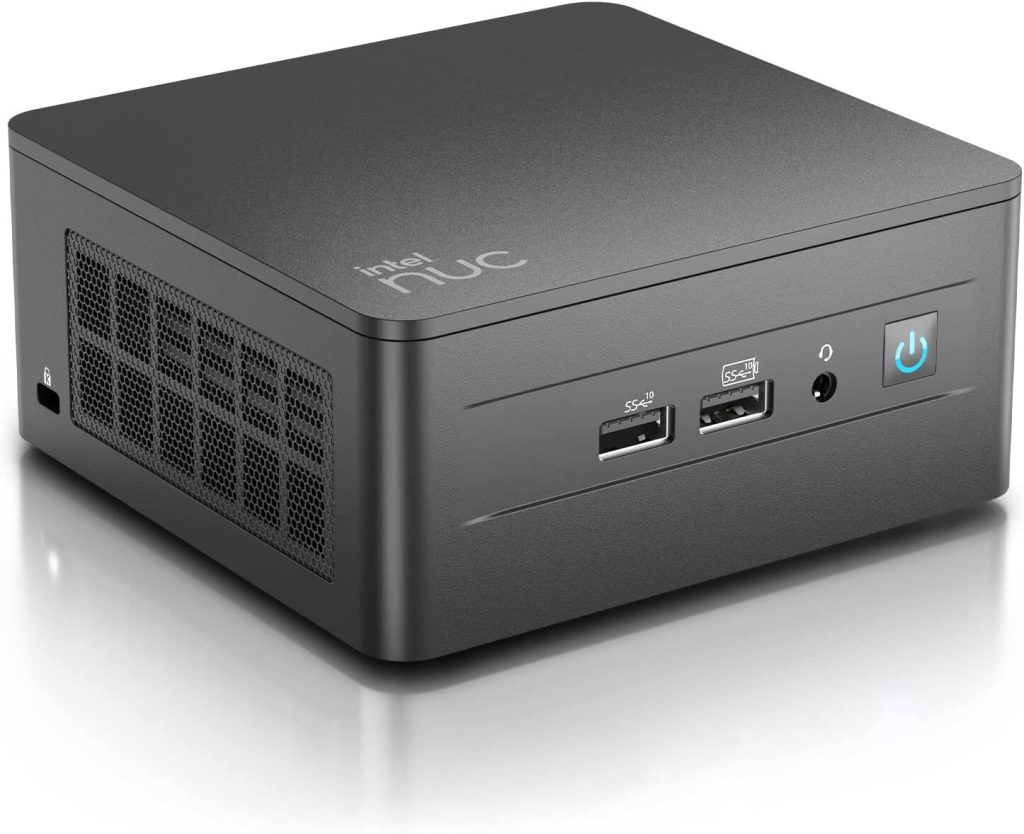
Overview & Features
Intel NUC, also known as Next Unit of Computing, is a line of small form factor computers manufactured by Intel. These mini PCs provide powerful performance in a compact size, making them an ideal choice for a variety of use cases. With a wide range of features, including powerful processors, solid-state drives, and Gigabit Ethernet, the Intel NUC is perfect for home assistants. Whether you’re looking for a device to power your smart home or to run virtual machines, the Intel NUC has the processing power and storage capacities to meet your performance requirements. Additionally, with the latest Intel Core processors and Intel UHD graphics, the Intel NUC delivers stunning display output and is capable of handling tasks like video editing with ease. Overall, the Intel NUC is a great choice for those who want a powerful and compact mini PC for their home assistant needs.
Pros and Cons of Intel NUCs for Home Assistants
Intel NUC Mini PCs are a popular choice for Home Assistants due to their power efficiency, flexibility, and customizable boards. However, there are also drawbacks to using them that should be considered before making a purchase decision.
Pros:
– Power efficiency: Intel NUCs are designed to consume very little power while still providing powerful processing capabilities. This makes them an excellent choice for energy-efficient homes.
– Flexibility: Intel NUCs are highly customizable and can be configured to meet the exact needs of the user. They can be used as file servers, virtual machines, or even as a media center.
– Customizable boards: Intel NUCs offer users the ability to replace components such as the RAM, storage capacity, and CPU, making them a very flexible option.
Cons:
– Higher cost: Intel NUCs generally cost more than other options such as Raspberry Pi. This can be a disadvantage for those who are on a budget.
– Limited storage capacity: Due to their compact size, Intel NUCs have limited space for additional storage devices. This can be a disadvantage for users who require a large amount of storage capacity.
Recommended Models for Intel NUC:
Intel NUC 11 13th Generation
The 13th-generation Intel NUCs are highly recommended for home assistant due to their powerful 11th Gen Intel Core processors, Intel Iris Xe graphics, and support for DDR5 RAM. They are also compatible with Wi-Fi 6 and offer a wide range of features such as USB-C ports, NVMe drives, and up to 64GB RAM.
Intel NUC 10
The 10th-generation Intel NUCs are a great budget-friendly option for home assistant. They come in barebones kits that allow for customization, have gigabit Ethernet, and support for up to 64GB DDR4 RAM. They also have Intel UHD Graphics and are compatible with NVMe and SATA SSDs.
Raspberry Pi
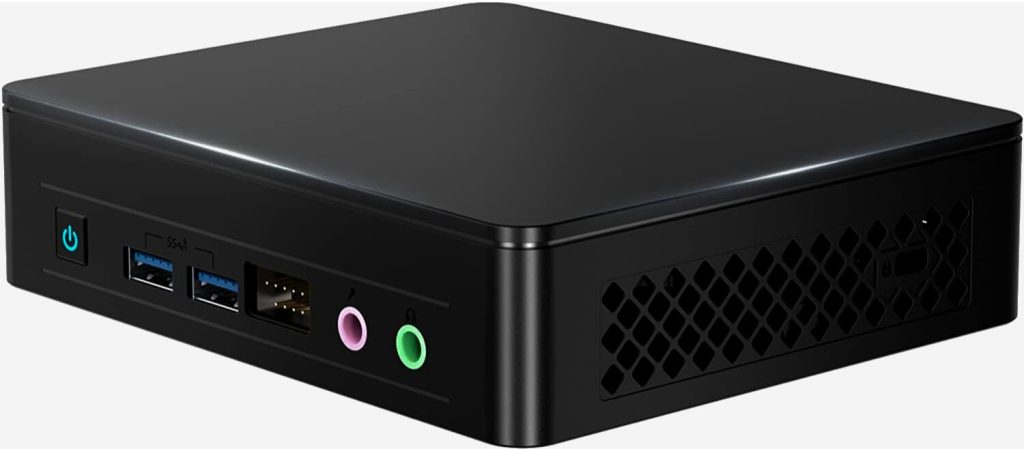
Raspberry Pi is a popular choice for home assistant due to its affordability, versatility, and range of features. With options ranging from a powerful Raspberry Pi 4 Model B to a more budget-friendly Raspberry Pi 3 Model B+, there is a Raspberry Pi that can fit the performance requirements and storage capacities needed for your smart home. In this article, we will take a closer look at the Raspberry Pi models that are the best fit for home assistant, their installation process, and their range of features.
Overview & Features
Mini-PCs have become a popular alternative to the traditional Raspberry Pi for home assistants, file servers, and virtual machines. They offer a range of features that make them a more versatile option for those looking to set up a compact desktop computer at home. One such option is the Beelink mini PC line.
Beelink mini-PCs come equipped with powerful processors and generous storage capacities, making them ideal for running Proxmox, Home Assistant VMs, and Plex Servers. They also include efficient cooling systems to support sustained usage.
One of the key advantages of Beelink mini-PCs over Raspberry Pis is their power consumption. Beelink offers models that use as little as 10 Watts of power, compared to the 3.5 Watts required by the most recent Raspberry Pi model. This means that Beelink mini-PCs are more cost-effective to run in the long term.
In terms of processing power, Beelink mini-PCs are equipped with Intel processors that offer faster speeds than most Raspberry Pi models, allowing for smoother performance and quicker execution of tasks. Additionally, Beelink mini-PCs allow for PCIe passthrough capabilities, which provide more options for connecting external devices.
Pros and Cons of Raspberry Pis for Home Assistants
When it comes to Home Assistant setups, Raspberry Pis are a popular choice among users. One of the main reasons is that these small devices come as complete modern computers that are low-cost and easily expandable through USB. They also have great community support, making them easy to set up and use.
However, Raspberry Pis do have their drawbacks. Due to their limited processing power and small amounts of RAM, they can experience slowdowns when running intensive tasks. Another common issue is that they are susceptible to failing SD cards, which can result in the loss of data and configurations.
Another factor to consider is customization. While Raspberry Pis are popular for their expandability through USB, their hardware customization options are limited. This can be a downside for users looking to tailor their setup to their specific needs.
In summary, Raspberry Pis are a great low-cost option for Home Assistant setups. They come as complete modern computers that are easily expandable and have strong community support. However, their limited processing power, susceptibility to failing SD cards, and limited hardware customization options can be drawbacks for some users.
Recommended Models for Raspberry Pi
Raspberry Pi Foundation has released several models over the years, each with its own unique features and capabilities. Here are some recommended models that cater to different needs:
Raspberry Pi 4
This is the most powerful and feature-rich Raspberry Pi model available. It offers a significant performance boost with a quad-core ARM Cortex-A72 processor, up to 8GB of RAM, and support for 4K video output. The Raspberry Pi 4 also features USB 3.0 ports, dual-band Wi-Fi, Bluetooth 5.0, and Gigabit Ethernet. It is an excellent choice for resource-intensive projects, media centers, and tasks that require high processing power.
Raspberry Pi Zero W
If size and cost are the primary factors for your project, the Raspberry Pi Zero W is an excellent choice. It is incredibly compact and lightweight, with a single-core ARM processor and 512MB of RAM. Despite its diminutive size, it includes built-in Wi-Fi and Bluetooth capabilities, making it suitable for IoT projects, wearable devices, and portable projects.
Gigabyte BRIX
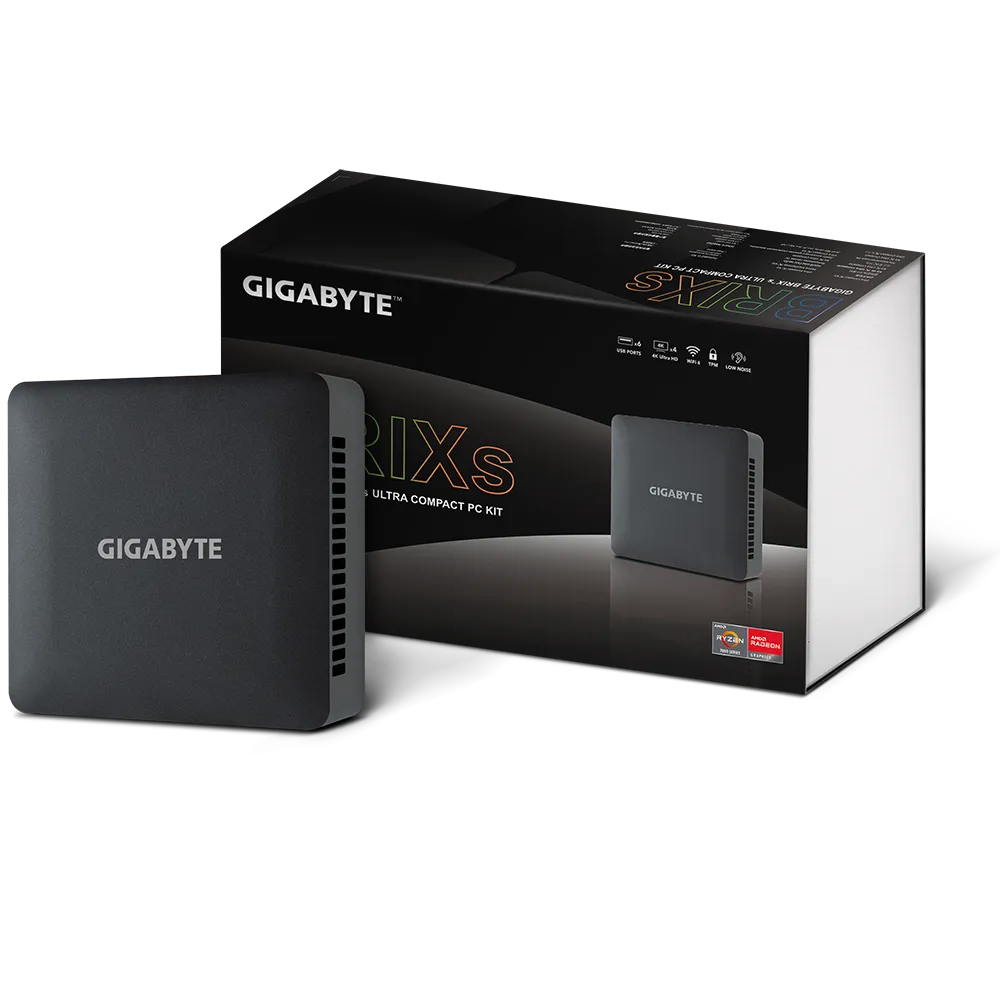
Gigabyte BRIX is a mini PC that packs a punch. It is a popular choice for home automation enthusiasts who require a powerful yet compact device to run their Home Assistant setups. The BRIX lineup offers a variety of models with different CPU options, storage capacities, and connectivity features. Whether you need a barebones kit to customize your mini PC or a fully equipped device for your file server or virtual machine needs, the Gigabyte BRIX can meet your performance requirements. In this article, we will take a closer look at the features and benefits of the Gigabyte BRIX mini PC for Home Assistant.
Overview & Features
The Gigabyte BRIX mini PC comes equipped with a powerful Intel Core processor and Intel UHD graphics to handle demanding tasks. It has a wide range of connectivity options, including Wi-Fi 6 and Gigabit Ethernet for fast internet speeds. The device has multiple USB ports, including USB 2.0, USB 3.2, and USB Type-C, for connecting various peripherals such as a USB drive, solid-state drive, or flash drive. The NVMe drive option allows for faster booting and faster data transfer. The compact design of Gigabyte BRIX ensures efficient heat dissipation, making it an excellent choice for continuous operation. The BRIX comes with a power supply that meets the power requirements of the device, ensuring stability and reliability.
The installation process of the Gigabyte BRIX is straightforward and does not require any technical expertise. You can choose to purchase a barebones kit and customize your device by installing components such as RAM, storage, and an operating system, or you can opt for a fully equipped device that comes pre-installed with Windows or Linux. The Gigabyte BRIX also has Intel Smart Cache, which dynamically allocates shared cache to each processor core based on workload, ensuring efficient performance. Additionally, the device has an auto power-on feature, which enables automatic startup when power is restored, making it ideal for electrical control, remote control power circuit, and smart power distribution box DB applications.
The Gigabyte BRIX mini PC is an excellent choice for Home Assistant setups that require power and efficiency without compromising on space. With its powerful processor, a wide range of features and connectivity options, and easy installation process, it is an ideal choice for file servers, virtual machines, and other demanding automation tasks. Its compact design and efficient heat dissipation ensure uninterrupted operation. It is an ideal alternative to Intel NUC and Raspberry Pi for those who require plenty of processing power for their Home Assistant needs.
Pros & Cons of Gigabyte BRIX
Gigabyte BRIX is a popular mini PC for home assistants that offers several benefits and drawbacks. One key advantage is its compact size, making it a great option for those with limited desk space or who want a more minimalist setup. Additionally, Gigabyte BRIX comes with powerful processors, ensuring that it can handle demanding tasks with ease. Another benefit is its flexible configuration, allowing users to customize the device to best suit their needs.
However, there are also some drawbacks to consider. One downside is the limited storage capacity, with many models only offering space for a single solid-state drive. This may not be sufficient for users who need to store large amounts of data. Additionally, Gigabyte BRIX has a higher price point compared to other mini PCs, which may deter budget-conscious buyers.
Recommended Models for Mini PCs for Home Assistant on Gigabyte BRIX:
GIGABYTE BRIX GB-BRi3-10110
The mini PC is an ultra-compact and powerful mini PC designed to meet your computing needs. Featuring an Intel Core i3-10110U processor, it delivers reliable performance for various tasks, from everyday computing to light multimedia usage.
With dual SO-DIMM DDR4 slots, this mini PC supports flexible memory configurations, allowing you to customize the system’s RAM capacity according to your requirements. The Intel UHD Graphics 620 ensures smooth visuals and supports high-resolution content.
Equipped with six USB 3.2 Gen2 ports, the GIGABYTE BRIX GB-BRi3-10110 offers fast data transfer speeds and convenient connectivity for external devices. The inclusion of Intel Wireless-AC 3168, dual-band WiFi, and Bluetooth 4.2 ensures seamless wireless connectivity options.
Additionally, this mini PC features an HDMI 2.0A port for connecting to high-definition displays, while the Gigabit LAN and RS232 Com ports provide versatile connectivity options for various peripherals and networking needs.
The GIGABYTE BRIX GB-BRi3-10110 combines compact size, powerful performance, and a range of connectivity options, making it an ideal choice for users seeking an ultra-compact yet capable mini PC solution.
GIGABYTE Brix GB-BACE-3160
The model is a compact and versatile system designed for efficient computing. Powered by an Intel Celeron J3160 processor, it delivers reliable performance for everyday tasks and light multitasking. With 8GB of RAM, this system ensures smooth operation and responsiveness.
Equipped with HDMI and VGA ports, the GIGABYTE Brix GB-BACE-3160 provides flexible connectivity options for connecting to external displays. It also features two USB 3.0 ports, allowing for fast data transfer and convenient device connections.
This retail package includes all the necessary components for a complete system setup, making it a convenient choice for users looking for a ready-to-use solution. Whether you need a compact home entertainment center or a space-saving office workstation, the GIGABYTE Brix GB-BACE-3160 delivers a reliable and cost-effective computing experience.
Gigabyte BRIX GB-BRi7H-10710
This mini PC is powered by a 10th generation Intel Core i7 processor and features Intel Iris Plus Graphics 640. It has a sturdy yet compact design that allows for heat dissipation, and comes equipped with multiple USB ports, including a Type-C port.
In summary, Gigabyte BRIX mini PCs offer a range of features suitable for home automation enthusiasts. Each of the above models provides high processing power, connectivity options, and storage capacities to ensure smooth operation of Home Assistant. The installation process is simple, and with their compact size, they can fit into any space while providing top-notch performance.
ASUS Vivo Mini VC66
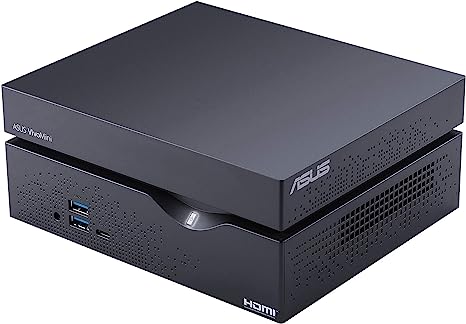
ASUS VivoMini VC66 is a powerful mini PC that is designed to handle demanding applications like running your Home Assistant. It is compact, power-efficient, and unobtrusive, making it an excellent addition to any home office or entertainment center. It packs an Intel Core i7 processor and up to 32GB DDR4 RAM, providing enough processing power to handle multiple tasks at once. Additionally, it comes with a range of connectivity options, including Wi-Fi 6 and display output, making it a versatile choice. With its impressive specs and compact design, ASUS VivoMini VC66 can be the perfect mini PC for your Home Assistant needs.
Overview & Features
ASUS VivoMini impresses with its small size and uncompromising performance. Equipped with powerful processors, ample RAM, and fast storage, it effortlessly handles multimedia editing, light gaming, and office productivity. Expect smooth and responsive performance for diverse computing needs.
Connectivity is a standout feature, offering USB, HDMI, and audio jacks for easy peripheral, display, and audio device connections. Create a versatile workstation or entertainment system to suit your specific requirements.
Energy efficiency is a notable advantage, consuming less power than traditional desktops. Enjoy powerful computing while reducing energy bills and contributing to a greener environment.
Considerations when choosing ASUS VivoMini include limited upgradability due to its compact design. Carefully select a configuration that meets long-term needs. Some models may have limited storage capacity, requiring external storage for large files or media libraries.
Price is higher compared to traditional desktops or other mini PC options. Assess your budget and determine if the additional cost aligns with desired performance and features.
Compact size may lead to higher temperatures during prolonged, intensive usage. Ensure proper ventilation and cooling measures for optimal performance.
In summary, ASUS VivoMini delivers impressive performance in a compact package. Its connectivity, energy efficiency, and powerful capabilities make it a versatile choice. Consider limitations in upgradability and storage, pricing, and temperature management for an informed decision.
Recommended Models
ASUS VivoMini offers a range of models to cater to different computing needs. Here are some recommended models that showcase the versatility and capabilities of ASUS VivoMini:
ASUS VivoMini PN50
This model is equipped with an AMD Ryzen 7 4700U processor that provides excellent processing power for both storage and memory. It also has a built-in Wi-Fi 6 and Gigabit Ethernet, ensuring fast and reliable connectivity. The storage capacity is impressive, with the option to add an NVMe drive for fast data transfer. The only con of this model is that it can be a bit noisy during use.
ASUS PN80 Mini PC System
This model has an Intel Core i7-11700B processor that can handle demanding tasks with ease. It also has a sturdy build that allows for easy component upgrades and replacements. The storage capacity is impressive, with the option to add a Solid State Drive or Hard Drive for more storage space. The only drawback of this model is that it can run quite hot, resulting in possible overheating.
ASUS UN65U-M023M VivoMini
This model is a compact and powerful computing solution. It features an Intel Core i7-11700B processor, delivering excellent performance for various tasks. With 16GB of DDR4 RAM, multitasking becomes smooth and efficient.
Equipped with an M.2 PCIe G4 512GB SSD, this mini PC offers fast storage access and ample space for your files and applications. It also includes WiFi 6E and Bluetooth technology, ensuring seamless connectivity options for wireless communication and peripherals.
The Thunderbolt 4 port enables high-speed data transfer and versatile connectivity, allowing you to connect external devices with ease. Running on Windows 11 Pro, the ASUS PN80 Mini PC System offers an intuitive and secure operating system that enhances productivity and delivers a user-friendly experience.
Features to Consider for Mini PCs for Home Assistants
Gigabit Ethernet Connectivity
Fast and reliable data transmission, ideal for stable and high-speed internet connection. Enables seamless control of smart devices, media streaming, and cloud services without delays or interruptions.
Power Efficiency & Powerful Processors
Opt for power-efficient processors like Intel Core i7 and i5 to reduce energy consumption and heat dissipation. Achieve high performance without compromising sustainability or cost-effectiveness.
Wi-Fi 6 Compatibility
Look for Wi-Fi 6 support (802.11ax) for faster and more reliable wireless connectivity. Supports multiple devices simultaneously and offers dual-band options (2.4GHz and 5GHz) for better network performance and reduced interference.
Consider a mini PC that offers both Gigabit Ethernet and Wi-Fi 6 compatibility for optimal connectivity. This ensures a seamless and always-connected home assistant setup. By prioritizing these key features, you can create a powerful and efficient home assistant setup that meets your connectivity needs while being sustainable and future-proof.
Price and Value for Money
When choosing a mini PC for your home assistant, considering the price range and value for money is crucial. The options available can range from budget-friendly to high-end models, making it essential to evaluate each option’s cost-effectiveness.
Many mini PCs offer excellent value for money. The Raspberry Pi is a popular choice due to its low price point and impressive range of features. The device can function as a file server, virtual machine, and can handle various computational tasks, making it an excellent budget-friendly option.
Intel NUCs are a bit pricier, but they provide solid performance for their cost. They feature powerful processors, Gigabit Ethernet, and support for Wi-Fi 6 connectivity. While they may be a bit more expensive, they are an ideal option for more demanding tasks like video editing.
Another excellent choice is the Alder Lake-powered 13th-generation Intel NUCs. These options feature an 8-core CPU, DDR5 RAM, and Intel Iris Xe graphics, making them an ideal option for those who require more processing power. However, they do come with a higher price tag.
With such a wide range of options, it’s important to consider your performance requirements and storage capacities when making a choice, so you can get the right balance between cost and functionality. Overall, these different mini PCs offer solid value for mney and provide excellent home assistant solutions at various price points.


